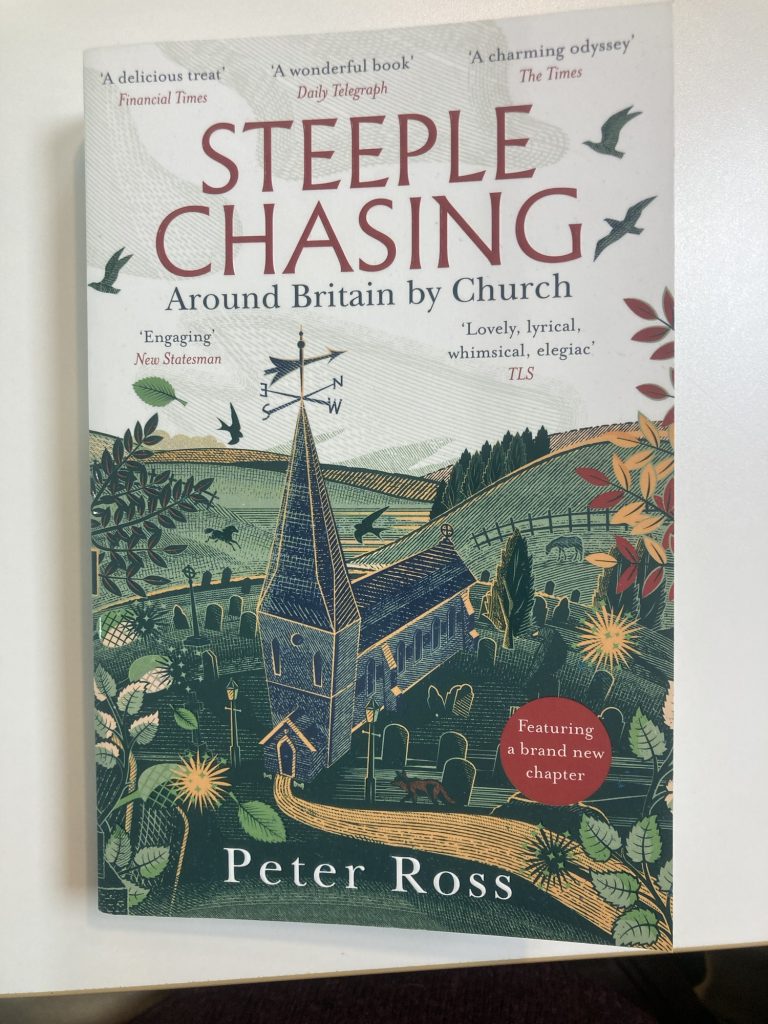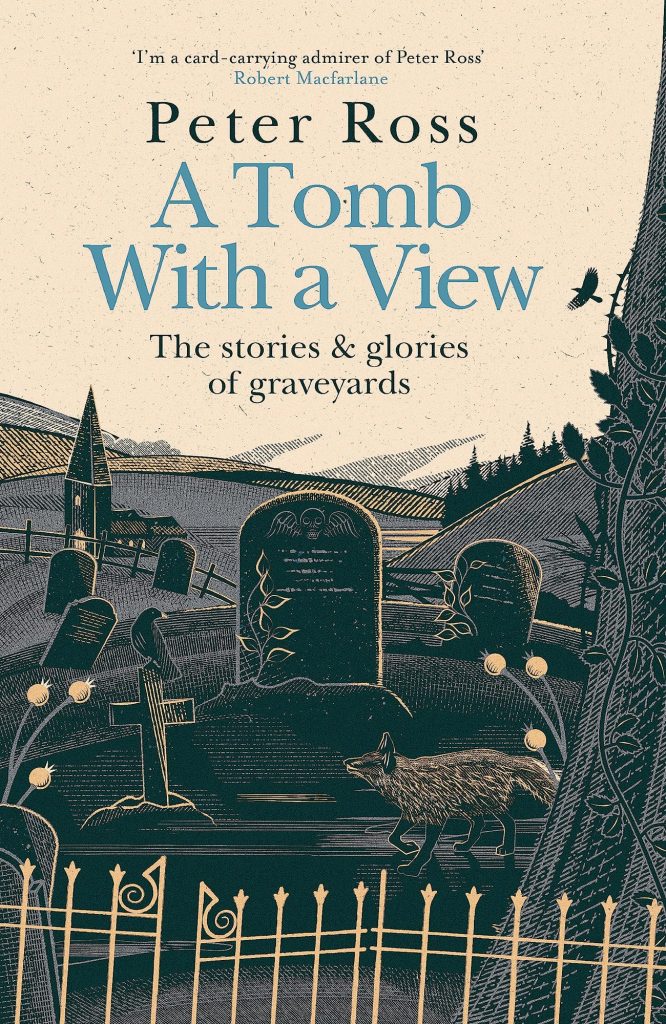

Just finished this. Parts of it are wonderful five star fare. But I have to note that it has a few characteristics that irk me slightly. We’ll get to that later.
The first thing to say is that I’m definitely a ‘church crawler’. A term coined – acc. to author Peter Ross in this book – by poet and church lover, John Betjeman. It’s almost an addiction with me.
But, to the book. Some chapters, such as those on the Great Fire and The Blitz, and the one about Cats, were – for me at least – pure unadulterated pleasure. Others – a rather large one titled ‘Wen’, perhaps most notably – bounce around rather more variably.
If you love churches, and especially a certain kind of church – not so much the Friends’ Meeting Houses of the Quakers, or Baptist Chapels, rather the High Anglican, and Catholic, etc. – then this is almost a no-brainer. Get a copy, read it, enjoy it!
But it’s possibly in the books attempts to cast it’s net so wide, in the human aspects, rather than the bricks, wood and glass, and the earnest and constant display of erudition, that it feels almost like it is trying too hard.
It doesn’t feel quite as relaxed as the prose style appears to signal. And it appears to partake of that contemporary non-fiction need to tick as many boxes as possible. I think I like the old fashioned unashamed this is me/my style way.

Even the way chapters or sub-sections start with what feels very like a fiction writer’s style of momentary immersion (examples) smacks of a trend in modern writing.
But I feel rather Grouch like, saying all of this! Overall I thoroughly enjoyed this book.
Coming at it, as I do, from a secular point of view (I was bought up ‘in faith’, but – possibly as with Ross? – moved on from it pretty swiftly), I’m somewhat relieved to hear how often the author encounters fellow secular church worshippers.
But I’m ambivalent about his softly, softly stance on the possible dissonance between secular aesthetes and connoisseurs, and more conventionally conformist believers. And I’m unsure as to the need to take in all comers; it’s that ticking all the boxes/covering all the bases thing again.
My biggest surprise and complaint, however, is that the churches themselves often seem to play second fiddle to the ‘talking heads’. For one thing, I think this book would definitely benefit from more and better pictures. So much of what one falls in love with in and around old churches is visual and sensory.
Ross does make a point of saying that, for him, a large part of the interest churches have is the human history they speak of. Maybe there I diverge from him a little? But, interestingly, he frequently alludes to the best experiences being when alone in churches; I totally agree. But that kind of runs counter to his human interest thread.

Also, whilst I agree that churches are indeed a reflection of huge wellsprings of human life and endeavour, they are almost like plainsong: a blending of many voices into anonymous wholes.
My own brand of secular aesthetic love of churches kind of turns away from folk, at least as it manifests in me personally. I’m minded of the Samuel Beckett line ‘beyond the fatuous clamour, the silence…’
The next words in that quote – ‘of which the universe is made’ – then take me back to the title of another book, about a sacred building, Universe of Stone (a work about Chartres Cathedral, that I own but haven’t read just yet!).
So, undoubtedly there are all these connections, which Ross elucidates and celebrates. But some of these resonate more, some less, with me. And I’m drawn more to the silent creations of art and architecture, than the Babel of particular human stories.
So, as already noted, I’d definitely recommend this book to lovers of old churches. But as you can see, I have caveats and reservations.
Another of these, one that strikes me quite forcibly as I try to wind up this review, is something that also affects my ability to enjoy Stately Homes.

These imposing edifices, just like castles and palaces (and all three of these types of buildings share certain features) are also part of a history of colonisation and oppression; dominance and control; exploitation and subjugation.
And the final and additional chapter of this paperback edition, which concerns royalty and churches, with Westminster Abbey as a nexus around the death of Liz and coronation of Chuck, troubles me on this subject, with the complete omission of any reference to that side of the history of churches.
I think one of the reasons I can and do enjoy churches the way that I do is predicated on their fall from dominance. That creates a safe neutral space for my secular enjoyment of these powerful buildings.
There’s a whole and much bigger ‘universe of stone’, which most of us are forced to live in, that is pretty grotesquely ugly, in it’s banality, to which most of us are subjected for almost all of our lives. The squalid brutal ugliness of much utilitarian architecture in contemporary society. The sort of stuff that prompts Grayson Perry to say (mistakenly, in my view) that ‘Democracy has bad taste’.
Like Stately Homes and Royal Palaces, churches have played a big part in a history of control and dominance. ‘God and my right’, we see in them, over and over. That’s an aspect of churchology not really addressed here. And this book is a bit poorer for that lacunae, to my mind.
It’s strange for me, this review. I loved this book. Ok, I have a few criticisms. But what’s doing my head in a bit is that my review seems dominated by the latter, rather than the former. But there you go!
